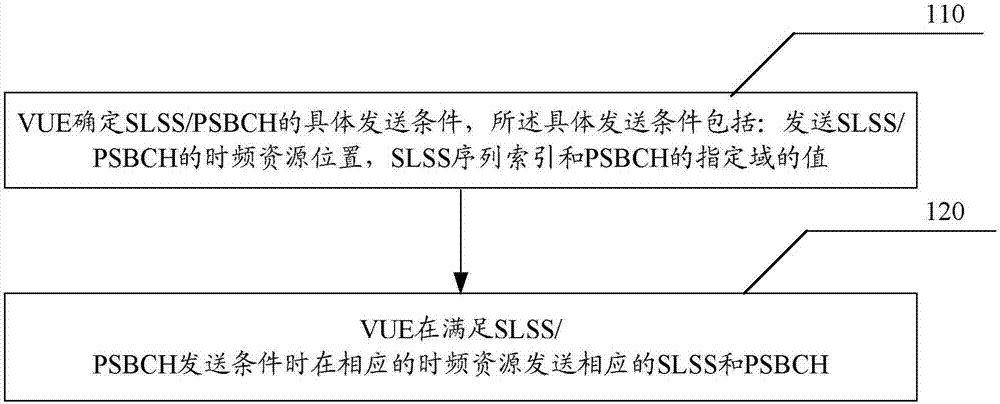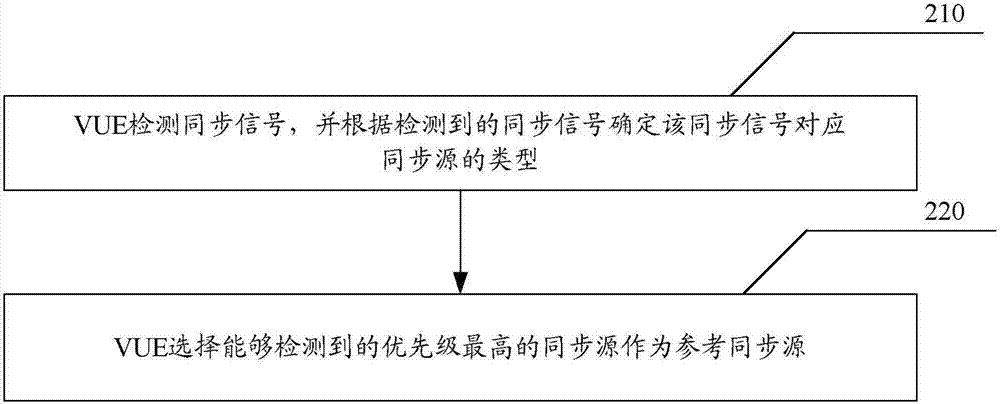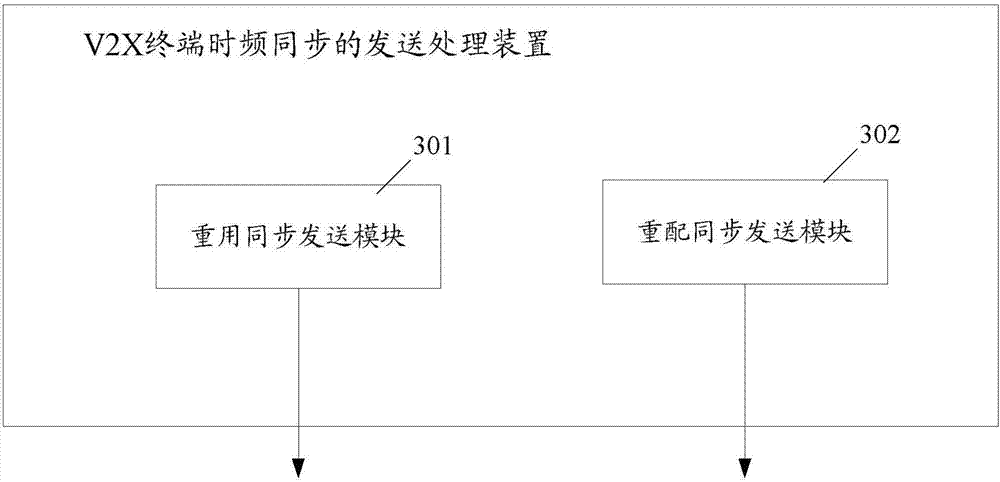Sending and receiving processing method and device of V2X terminal time frequency synchronization
A technology of time-frequency synchronization and processing methods, which is applied in the directions of synchronization devices, connection management, transportation and packaging, etc., and can solve problems such as no mature implementation solutions
- Summary
- Abstract
- Description
- Claims
- Application Information
AI Technical Summary
Problems solved by technology
Method used
Image
Examples
Embodiment 1
[0154] In the first embodiment, the UE is a controlled VUE, and the controlled VUE acquires specific sending condition information for sending the SLSS according to an instruction of the eNB. VUE uses eNB or GNSS as a reference synchronization source, and sends SLSS with this reference. In order to reduce the impact on cellular network communication and ensure backward compatibility, VUE reuses the time-frequency resources configured in the cell for SLSS transmission of D2D terminals, and uses the same synchronization sequence and PSBCH structure as D2D terminals. The specific implementation steps are as follows:
[0155] Step 310: The VUE receives the instruction signaling about the specific sending condition information sent by the eNB, and determines the specific sending condition of the SLSS / PSBCH according to the instruction signaling. The specific sending condition includes: the time-frequency resource position for sending the SLSS / PSBCH, the SLSS sequence Index and the...
Embodiment 2
[0166] In the second embodiment, the UE is an autonomous VUE, and the VUE acquires corresponding information for sending the SLSS according to the pre-configuration. The VUE can use other SLSS-sending UEs or GNSS as a reference synchronization source, and use this as a reference to send SLSS and PSBCH. In order to reduce the impact on cellular network communication and ensure backward compatibility, VUE reuses the time-frequency resources configured in the cell for SLSS transmission of D2D terminals, and uses the same synchronization sequence and PSBCH structure as D2D terminals. The specific implementation steps are as follows:
[0167] Step 410: The VUE determines the specific sending condition of the SLSS / PSBCH, the time-frequency resource position of the sending SLSS / PSBCH, the SLSS sequence index and the value of the partial field of the PSBCH.
[0168] Step 420: The VUE transmits the corresponding SLSS and PSBCH on the corresponding time-frequency resource when the SLSS...
Embodiment 3
[0180] In the third embodiment, the UE is a controlled VUE, and the VUE acquires corresponding information for sending the SLSS according to the instruction of the eNB. VUE uses eNB or GNSS as a reference synchronization source, and sends SLSS with this reference. In this embodiment, the PSBCH structure sent by the VUE may be different from that sent by the D2D terminal. In order to avoid mutual influence, the time-frequency resource and the SLSS sequence for the VUE to send SLSS are different from those sent by the D2D terminal. The specific implementation steps are as follows:
[0181] Step 510: The VUE receives the eNB signaling to determine the specific sending conditions of the SLSS / PSBCH, and sends the time-frequency resource position of the SLSS / PSBCH, the SLSS sequence index and the value of the partial field of the PSBCH.
[0182] Step 520: The VUE transmits the corresponding SLSS and PSBCH on the corresponding time-frequency resource when the SLSS transmission condi...
PUM
 Login to View More
Login to View More Abstract
Description
Claims
Application Information
 Login to View More
Login to View More - R&D
- Intellectual Property
- Life Sciences
- Materials
- Tech Scout
- Unparalleled Data Quality
- Higher Quality Content
- 60% Fewer Hallucinations
Browse by: Latest US Patents, China's latest patents, Technical Efficacy Thesaurus, Application Domain, Technology Topic, Popular Technical Reports.
© 2025 PatSnap. All rights reserved.Legal|Privacy policy|Modern Slavery Act Transparency Statement|Sitemap|About US| Contact US: help@patsnap.com



